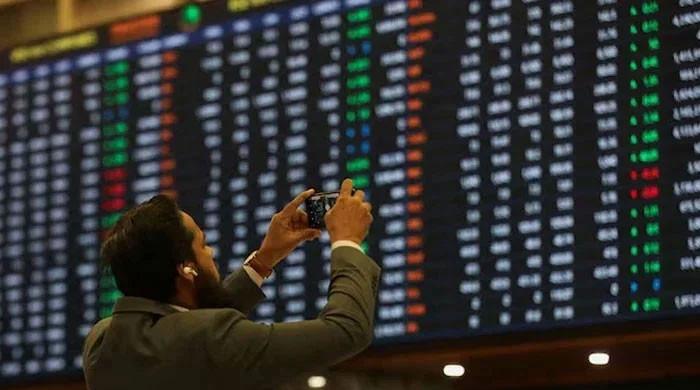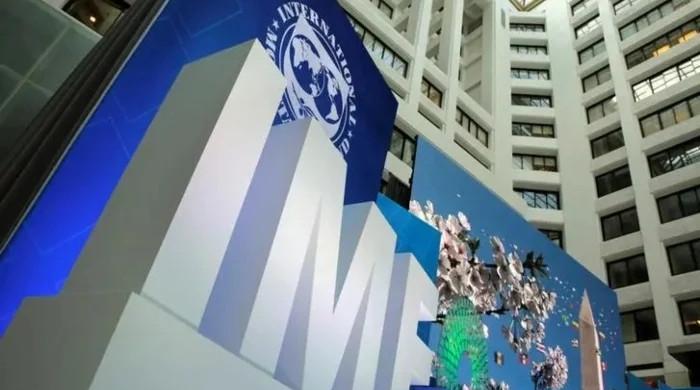How to break a vicious cycle (Part II)
Main drivers of such growth would be small farm agriculture, SMEs and microenterprises, construction and low-cost housing etc
June 03, 2022

It goes without saying that political stability is the sine qua non for any sustained effort to achieve rapid and inclusive growth. The main drivers of such growth would be small farm agriculture, SMEs and microenterprises, construction and low-cost housing, tourism, IT and IT enabled services, diversification and value addition in exports.
Thus, the agenda proposed for the short, medium and long term should have a continuous chain, linking and consolidating the gains from these sectors and stimulating inter-sectoral synergetic impulses over time. Continuity of these policies beyond the electoral cycle is an absolute must. There are multiple pathways to attain this kind of growth but the preferred route to be chosen is the one that expands domestic productive capacity to meet the higher aggregate demand associated with rising per capita incomes, the relatively high propensity to create productive jobs and support livelihoods, alleviate poverty, and reduce interpersonal and regional inequality. Tough political decisions would be required from time to time. The time horizons described are not discrete as they would have spillovers but are continuous, interwoven in a chain that leads to the ultimate goal.
Short-term Agenda 2022-24: The revival of non-inflationary, sustained and inclusive growth would span a much longer time period. What is presented in the following paragraphs is what can possibly be done in the next two-and-a-half-year time period with great concerted effort. We are fully aware that there will be elections in 2023 but the commitment of all political parties to this agenda is to be secured.
For this, first, raise the investment-to-GDP ratio by two percentage points every year, reaching 20 per cent by 2024. Public-sector investment along with public-private partnership should not only be stepped up but its quality and composition should be able to crowd in private sector investment. Bank credit-to-GDP ratio, particularly in the fixed investment component, has remained dismally low compared to our neighbouring countries and has to be doubled from the current level. Private equity, development finance institutions, IPOs , and debt capital markets have to play a crucial role in financing private investment.
Second, increase productivity of small and medium sized farmers – particularly in wheat, sugar, cotton, oilseeds, livestock products and pulses – improve marketing infrastructure, confine the role of government to strategic reserves for managing demand supply gap, and maintain price stability. Provision of improved seed, fertiliser, pesticides, small agricultural implements through targeted subsidies along with water resource use efficiency and credit to small farmers who constitute two third of the total farms can boost the national yields of crops. Veterinary services and artificial insemination would do the same for dairy and livestock. It is paradoxical that a country with the largest irrigation system has to import food items and cotton amounting to almost $10 billion. The impressive results in rice and maize crops show that government intervention in markets is to be avoided. R&D in the public sector needs to be integrated and coordinated.
Third, continue focused attention on the construction and housing sector and tourism which would create jobs, induce activity in the allied industries, assist micro, small and medium enterprises and help low-income families in acquiring houses and expanding tourist facilities in Gilgit-Baltistan, Khyber Pakhtunkhwa, the Makran Coast and Azad Jammu and Kashmir. The domestic cement industry is not only expanding in response to demand within the country but also because of economies of scale it is able to export. The Pakistan Steel Mills has to be made fully operational under private sector lease arrangement and expanded to three million ton capacity and, along with performance linked incentives to manufacture quality products, will reduce dependence on imports. The engineering goods industry has remained stunted and should be incentivized to meet the local industrial demand or compete in international markets.
Fourth, broaden the FBR and provincial tax bases to attain tax-to-GDP ratio of 15 per cent (provincial taxes contributing three per cent from one per cent at present) through automation, data integration and data analytics, harmonization, new surveys and valuation of properties, track and trace system, and minimizing interaction between taxpayer and tax collector; gradually bring down the ratio of indirect taxes from 60 per cent of the total to 50 per cent; expedite income tax and sales tax refunds on the lines of FASTER without any human intervention at any stage in the process.
Urban property tax is a huge potential that can be tapped if the powers to assess and collect this tax is devolved to municipal corporations. Cities like Karachi, Lahore, Islamabad and Faisalabad can generate five to six times more than the present levels if they carry out cadastral surveys, revalue properties annually and impose heavy penalties on non-utilization of plots. Taxes on the agriculture income of large landowners and revision of irrigation charges can prove to be a remunerative source of income for the provinces and also ensure efficient use of water resources that are getting scarce. The reliance on indirect taxes on goods and services is highly regressive and it needs to be replaced by direct taxes on income (irrespective of the source), property, capital gains, assets and inheritance.
Fifth, revamp state-owned enterprises (SOEs) through restructuring, capital market sales, sales to strategic investors, mergers, liquidation, management contracts, public-private partnership to improve overall economic efficiency and maximize the returns to the exchequer. All the heads of these enterprises have to be recruited through an open competitive process and the candidates selected on the basis of merit, compensated well but held accountable for the results. The ministry heading this can set the performance agreements but not interfere in day-to-day operations.
A comprehensive plan and strategy is already in place that has classified the commercial SOEs in two parts – those to be retained in public ownership for strategic or public policy considerations and those which have to be privatized or liquidated. Under the first category, some of the enterprises have to be restructured and made financially viable. The implementation of this plan would save close to one trillion rupees in form of grants, domestic and foreign loans, guarantees, equity, capital allocations, subsidies funded and unfunded. The fiscal situation would improve if this plan is expeditiously executed.
Sixth, implement the circular debt management plan of the power sector, transit towards a competitive market for buyers and sellers, reduce inefficiencies of DISCOs, utilize excess power generation by raising the demand for increased absorption through incentive pricing. DISCOs should immediately be transferred to private-sector management through an open competitive process. Government interference in price setting should come to an end. The private sector should be facilitated to bring in LNG and distribute it among the consumers without any government guarantee or take-or-pay arrangements. Sui Southern and Sui Northern should own the transmission network but the procurement and distribution should be opened up to private-sector companies to introduce competition and efficiency and benefit the industries.
Foreign exploration and development companies in the oil and gas sector are gradually quitting Pakistan. What can be done to attract them back? Our oil refinery policy has been in a state of animated suspension and a decision should be taken quickly to upgrade them and expand their capacity. Fuel composition towards renewable energy is part of the energy plan but implementation should be given priority. The Thar Coal mining expansion and railways links with consuming power stations along with the possibility of its conversion into gas would reduce our fuel costs and import bill on energy.
To be continued
The writer is the author of ‘Governing the ungovernable’.
Originally published in The News









